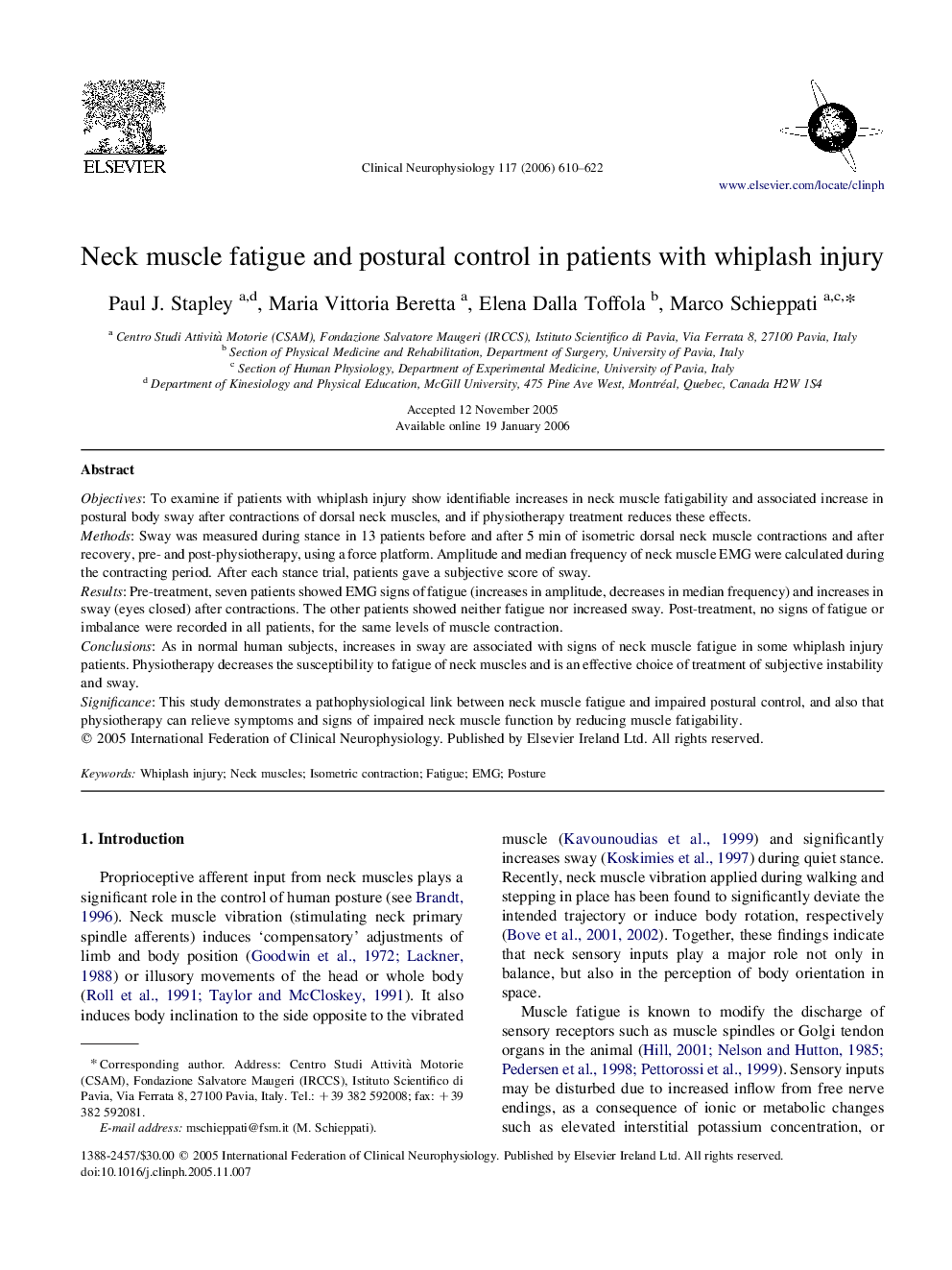| Article ID | Journal | Published Year | Pages | File Type |
|---|---|---|---|---|
| 3048431 | Clinical Neurophysiology | 2006 | 13 Pages |
ObjectivesTo examine if patients with whiplash injury show identifiable increases in neck muscle fatigability and associated increase in postural body sway after contractions of dorsal neck muscles, and if physiotherapy treatment reduces these effects.MethodsSway was measured during stance in 13 patients before and after 5 min of isometric dorsal neck muscle contractions and after recovery, pre- and post-physiotherapy, using a force platform. Amplitude and median frequency of neck muscle EMG were calculated during the contracting period. After each stance trial, patients gave a subjective score of sway.ResultsPre-treatment, seven patients showed EMG signs of fatigue (increases in amplitude, decreases in median frequency) and increases in sway (eyes closed) after contractions. The other patients showed neither fatigue nor increased sway. Post-treatment, no signs of fatigue or imbalance were recorded in all patients, for the same levels of muscle contraction.ConclusionsAs in normal human subjects, increases in sway are associated with signs of neck muscle fatigue in some whiplash injury patients. Physiotherapy decreases the susceptibility to fatigue of neck muscles and is an effective choice of treatment of subjective instability and sway.SignificanceThis study demonstrates a pathophysiological link between neck muscle fatigue and impaired postural control, and also that physiotherapy can relieve symptoms and signs of impaired neck muscle function by reducing muscle fatigability.
